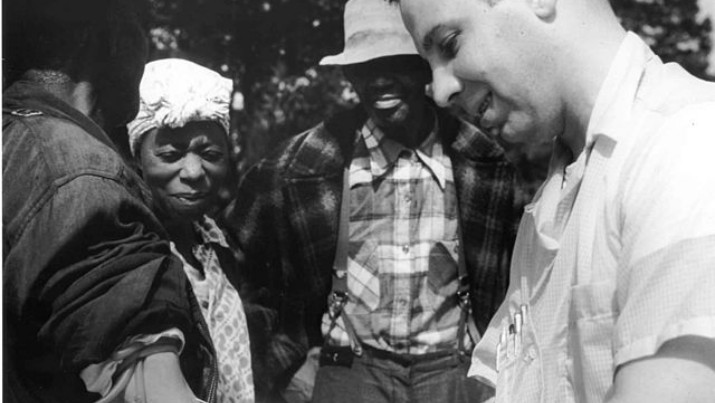The Tuskegee Experiment at 45: Have Public-Health Programs Been Vindicated?
11/17/2017 / By Thomas Dishaw

November 16, 2017 marks the forty-fifth anniversary of the federal memorandum that ended the Tuskegee syphilis experiment. In 1932, the U.S. Public Health Service (USPHS) enrolled 600 indigent black-male sharecroppers in the study who were residents of Macon County, Alabama.
The study subjects were promised, among other services, free treatments for “bad blood” (a term that included the symptoms of anemia and lethargy as well as syphilis), treatments for other minor illnesses, and free burial if they agreed to an autopsy after their deaths. Of the 600 subjects, 399 were found to be infected with syphilis, while 201 were not.
The Counter-narrative
Some political moderates and progressives are bitter about the mainstream account of Tuskegee because it has to some degree fostered suspicion of public-health programs, which they enthusiastically support. While there has been a counter-narrative about Tuskegee since its end, a renewed one has gained strength since Benedek and Erlen (1999).
Counter-narrative proponents point out that the study’s title (Tuskegee Study of Untreated Syphilis in the Negro Male) reinforces in part that the study was an examination of men with late-stage dormant syphilis who were not contagious and who had the infection for five or more years. A 1950 report from the study itself documents that of 410 infected subjects selected from 1931-32 and 1932-33, 178 were in fact given the standard treatmentof the time, neoarsphenamine.
The standard treatments of the day, arsenical compounds, were toxic (and as such had many adverse side effects), required a regimen that could consume about a year’s time, and were of little reliability in terms of a cure. With such high costs and few benefits, patient non-compliance rates hovered about 80-90 percent. Add to this the fact that most syphilis patients who made it past the early stages of the disease without treatment experienced no further symptoms. In other words, it was anything but clear that subjecting a patient to a possible year-long regimen of arsenic poisoning was an obvious superior alternative to doing nothing.
As for penicillin, it was not standardized and widely available until about 1955 at the earliest, not 1947. By 1955, study subjects who were still alive had been infected for two decades or longer, thus their infections had either died off or been neutralized. For subjects with latent syphilis for another 17 years until the end of Tuskegee, penicillin would have done little if anything for their comfort or life expectancy.
Does the Counter-narrative Vindicate the Public-Health Model?
No doubt this counter-narrative, written with the help of physicians, seems to be a formidable critique of the mainstream account. Heart-valve damage from syphilis would have occurred before the arrival of penicillin and the antibiotic would not have repaired it.
However, penicillin would have cured inflammation and some subjects would have benefited from this. That the study subjects still had roughly comparable life expectancies to men who were never infected does not address the issue that the subjects were not fully informed about their new treatment options. Second, though downplayed, deception was definitely part of the study: for example, spinal taps were administered to some subjects. These painful tests were advertised as therapeutic, when they were nothing of the sort.
Even if one accepts all of the alternate account of Tuskegee, its proponents could not be more in error if they assume that such an acceptance should allay all concerns about public-health programs and their dangerous alliance between medicine and state. Two further programs should suffice to illustrate this.
The Guatemala Experiment (1946-1948)
While it is a myth that the Tuskegee subjects were deliberately injected with syphilis, this was not the case in the U.S. experiments in Guatemala that tested penicillin and the arsenical compound orvus-mapharsen.
USPHS gained access to Guatemalan clinics, hospitals, mental hospitals, and orphanages where, with no consent given, about 1,300 Guatemalan prisoners, soldiers, prostitutes, mental patients, and orphan children at least ten years of age were deliberately infected with syphilis, gonorrhea, or chancroid.
Both prisoners and soldiers were encouraged to have sex with prostitutes that they did not know were infected, and at least this part of the program was funded by the U.S. National Institutes of Health. Psychiatric patients were injected with syphilis below the back of their skulls and injected with gonorrhea through their urethras or eyes. Although a treatment program was implemented, only about 650 of the 1,300 who were deliberately infected received treatment.
Forced Sterilization (1907-1945)
While Briton Francis Galton provided the blueprints, American progressives were the first to initiate a eugenics movement, beginning in Indiana, which passed the first sterilization law in 1907. About 30 more states followed suit, with California being the most enthusiastic. By the movement’s end, about 65,000 Americans deemed “morons” or “unfit” for procreation had been forcibly sterilized, with California having sterilized about 2,500 of its citizens.
Canada, France, and Sweden followed the U.S., but of course the most notorious imitator was Germany where the Law for the Prevention of Hereditarily Diseased Offspring was approved in 1933. This Nazi law was based on a model drafted by American progressive Harry H. Laughlin, an enthusiastic supporter of not only eugenics but “racial integrity” laws and the establishment of a global government. The 1933 Nazi law established genetic courts that decided whether particular Germans were fit for procreation. By the end of the Nazi era in 1945, about 200 genetic courts had ordered the forced sterilization of about 400,000 Germans.
Dale Steinreich is an economist and an Associated Scholar of the Mises Institute.
Copyright Information: This article was reprinted with permission from Mises.org. Please contact the author directly for republishing information.
Submit a correction >>
Tagged Under:
This article may contain statements that reflect the opinion of the author
RECENT NEWS & ARTICLES
COPYRIGHT © 2017 GOVTSLAVES.COM
All content posted on this site is protected under Free Speech. GovtSlaves.com is not responsible for content written by contributing authors. The information on this site is provided for educational and entertainment purposes only. It is not intended as a substitute for professional advice of any kind. GovtSlaves.com assumes no responsibility for the use or misuse of this material. All trademarks, registered trademarks and service marks mentioned on this site are the property of their respective owners.



















